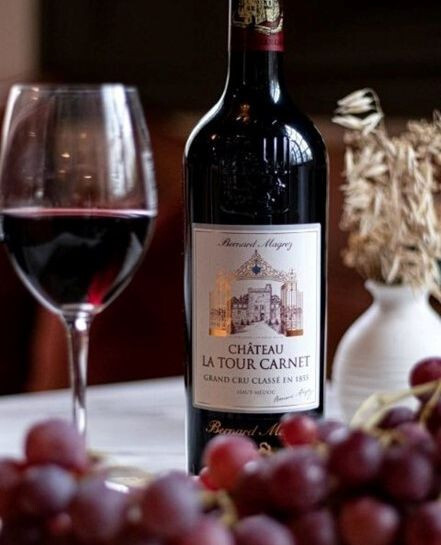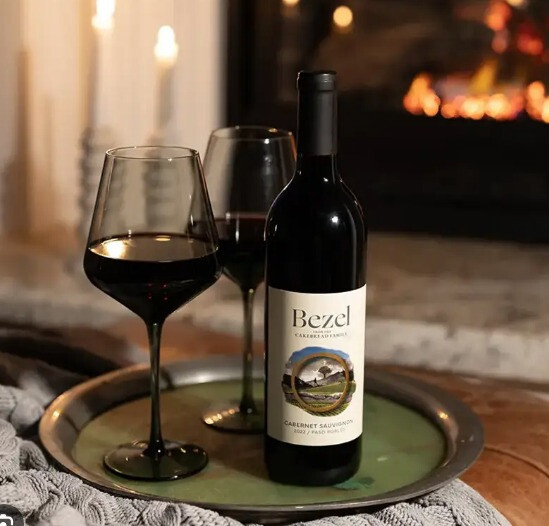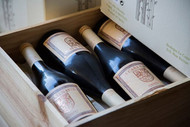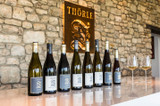Jul 22nd 2025
Vermentino: The Mediterranean White Wine Every Explorer Should Know
You are relaxing on a sun-drenched terrace with a view of the sea. There is a plate of grilled octopus in front of you, and a chilled glass of something crisp, salty, and citrusy in your hand. That is Vermentino – the Mediterranean’s best-kept white wine secret.
Vermentino embodies coastal wine energy. It’s planted on breezy, sun-troped oceanside properties from Sardinia to Corsica and Liguria, where it conveys a sense of the sea, wild herbs, and citrus in the same flavorful bottle. It’s a category sensibility for anyone enthusiastic about a lively, food-friendly white wine personality.
Vermentino is a late-ripening cultivar of white wine grapes that prefer coastal locations full of sun. It is at home in a Mediterranean setting where it can bathe in days flooded with sunlight and be cooled off with salty breezes.
What Is Vermentino and Where Does It Thrive?
Vermentino flourishes in sun-drenched coastal regions, producing vibrant, aromatic wines with a refreshing minerality. Some of the top appellations for Vermentino include:
- Vermentino di Gallura DOCG (Sardinia): Italy's only DOCG for Vermentino, it produces wines with more structure and minerality.
- Riviera Ligure di Ponente DOC (Liguria): stacked hillside vineyards produce leaner and more aromatic wines.
- Patrimonio AOC (Corsica): Rustic, French-Mediterranean style of the grape, herbal, and weighty.
- Toscana IGT (Tuscan Coast): Usually richer, sometimes oaked, with ripe fruit and almond tones.
Rolle is the name under which Vermentino is grown in Provence, although increasingly it is seen in New World regions like California and Australia, where it's valued for its crisp acidity and textural complexity.
Related Products
Why Does Vermentino Taste So Crisp and Coastal
Vermentino is breezy by nature. It has a sharp, zesty, and refreshing character, quite often finishing in a clean, citrusy way. This depends heavily on region and winemaking choices.
Climate & Soil Influence:
Vermentino prefers coastal wine zones that present:
- Sea breezes cool the grapes and keep their acidity.
- Temperature swings in the diurnal range enhance complexity.
- Soils such as granite and limestone provide mineral support.
Classic Flavor Profile:
- Meyer lemon, lime zest
- Green apple, white peach
- White blossom, rosemary
- A saline finish, almost as if you were holding the ocean breeze in a glass
Vermentino vs. Other Mediterranean Whites:
|
Grape |
Body |
Acidity |
Key Notes |
|
Vermentino |
Light-Medium |
High |
Lemon, herbs, saline |
|
Albariño |
Light |
High |
Lime, melon, saline |
|
Assyrtiko |
Medium |
Very High |
Flint, citrus, volcanic minerality |
Along with aromatic freshness and mouth-watering minerality, Vermentino is one of those great coastal wine choices.
How Do Different Terroirs Shape Vermentino’s Wine Profiles?
To truly understand Vermentino, one must consider how terroir influences its flavor. The wine’s profile can vary significantly depending on altitude, soil composition, and even the winemaker’s style.
- Sardinia (Vermentino di Gallura DOCG): Full-bodied, with aromas of citrus peel, crushed rock, and herbal lift. Alcohol is often above 13.5%. Goes well with seafood pasta or roast chicken.
- Liguria (Riviera Ligure di Ponente): Light and focused. Showcase lime zest, alpine herbs, and brisk acidity. Best suited as an aperitif or with raw shellfish.
- Corsica (Patrimonio): Slightly smoky. Has wildflower and stone fruit notes. Complex and rustic, these wines show promising aging potential.
- Tuscany (Bolgheri/Toscana IGT): Creamier, rounder vermentinos - almond and peach on the nose, some lightly oaked.
- California & Australia: Riper tropical note (pineapple, mango), softer acid, and creamier (especially true in hotter climates like Paso Robles).
Still, regardless of region, vermentino is refreshingly bright, always something that keeps it tied to the coastal family.
Which Vermentino Styles Should You Try First?

Vermentino is as versatile as it is food-friendly! Here are several options you can explore:
- Unoaked Sardinian Vermentino: It has a crisp, stainless-steel aged profile of purity, minerality, and citrus. We suggest trying Mancini Vermentino di Gallura 2024 from WHWC.
- Skin-contact Vermentino: Also known as “orange” wine, it is fermented with its skins, allowing for added texture and grip from the skins. It is perfect for wine adventurers!
- Lightly oaked Tuscan Vermentino: This version has a softer taste profile. The ageing in oak results in notes of almond, baked apple, and a soft, creamy finish.
- Sparkling Vermentino: Made using the Charmat method, which is also the same method used to make Prosecco. Perfect for a lightweight patio sipper or party wine!
- Corsican Bottles Overall Value Under $25: These offer floral complexity, perfect for weeknight meals. Highlighting a few selections from WHWC’s Corsican selections.
Which Foods Pair Best With Vermentino?
With its crisp acidity and herbaceous lift, Vermentino is probably the best wine to drink with Mediterranean food. Vermentino acts and performs similar to a squeeze of lemon on food - it adds freshness and elegance, cleanses the palate, and provides an aromatic lift depending on the food descriptor.
- Seafood: Pair more traditional seafood where Vermentino wine works exceptionally well. Classic would be freshly shucked oysters or scallops with butter, where all of the citrusy notes and saline edge of the Vermentino cuts through the inherent richness of the food.
- Vegetarian: The herbaceous lift of Vermentino is great to enjoy with plant-forward plates. Try creamy pesto pasta or grilled eggplant finished with olive oil and salt.
- Cheese: Vermentino pairs well with tangy young cheeses. Grab fresh goat cheese (chèvre) to match its floral notes, or young pecorino for a soft, nutty cheese to contrast.
How to Buy, Serve, and Store Vermentino Like a Pro

- Temperature: 46–50°F (8–10°C). Too cold, and the aromatics dissipate. Too warm, and the acidity will drift away.
- Glassware: A medium-sized white wine glass (with a bit of a flare) to enhance aroma and express freshness.
- Life Expectancy: Drink within 2–4 years for freshness. A few Gallura crus will age up to 7 years.
- Opt for WHWC’s Summer Shipping Pack: WHWC has summer shipping packs and cold-chain options to guarantee your coastal wine survives the trip without excessive heat!
FAQ: Your Top Vermentino & Mediterranean Wine Questions Answered
- Is Rolle and Vermentino the same thing?
Yes. Vermentino is the Italian name, and Rolle is the French name, largely in Provence.
- Can Vermentino age?
Most are best younger, but the best bottlings from Sardinia and Corsica can develop for 5-7 years.
- Is Vermentino always dry?
Yes, we have never had one that was not vinified dry, although ripe fruit can give a soft sensation.
- What is the difference between Vermentino and Sauvignon Blanc?
Vermentino is rounder, more herbal, less aggressive in acidity, with frequently a saline edge.
- Is it gluten-free and vegan?
Most are gluten-free, whether vegan depends on fining agents—read producer notes.
Vermentino is the white wine we bring to the beach with an extra dimension for the dinner table. From the citrusy zip to herbal nuance, it delivers coastal wine energy in every sip. Whether you’re chasing sunset or spicing up a Monday dinner, Vermentino deserves a spot in your glass.
Check out WHWC's Vermentino collection and bring the Mediterranean to your table tonight.








